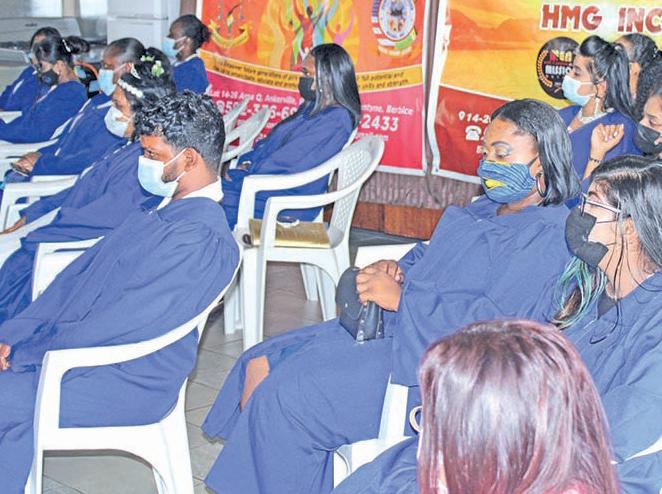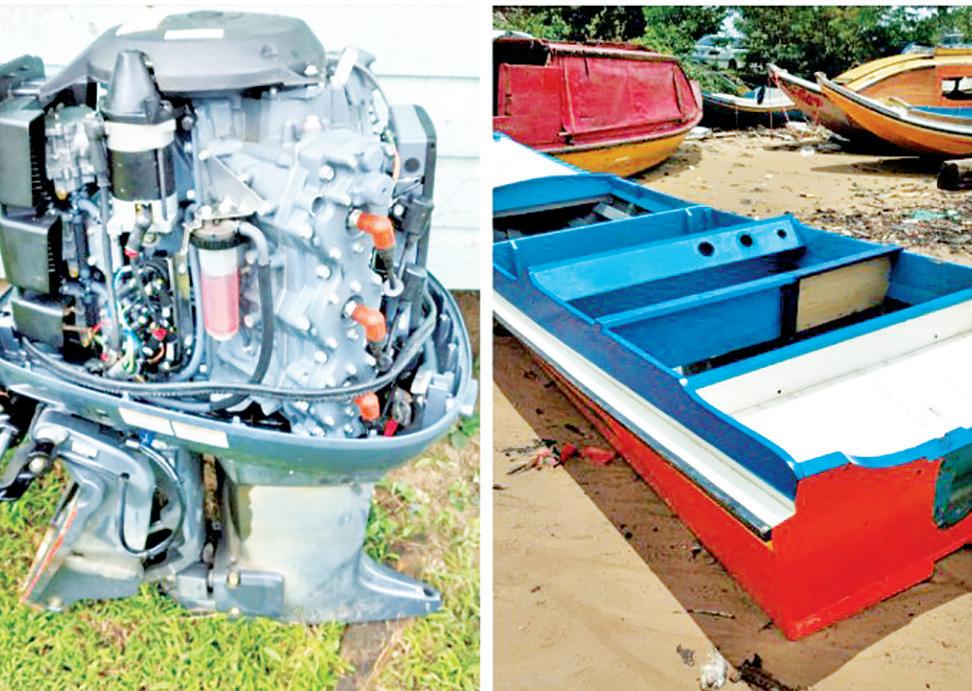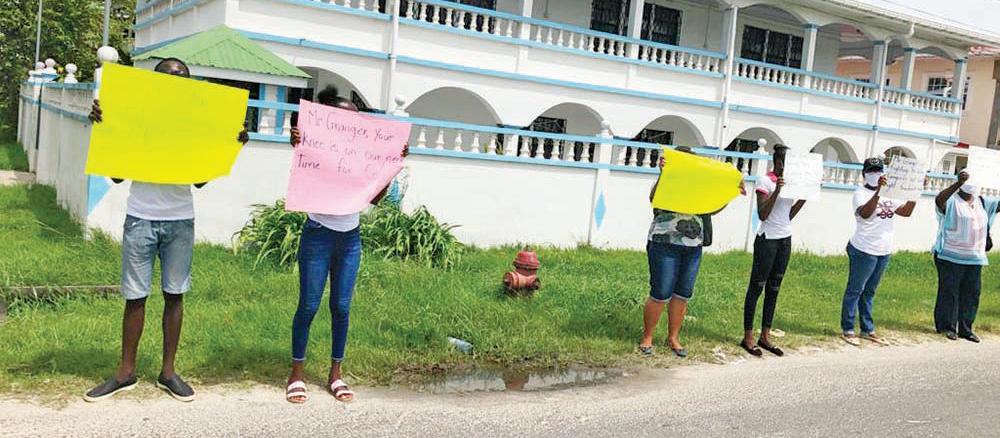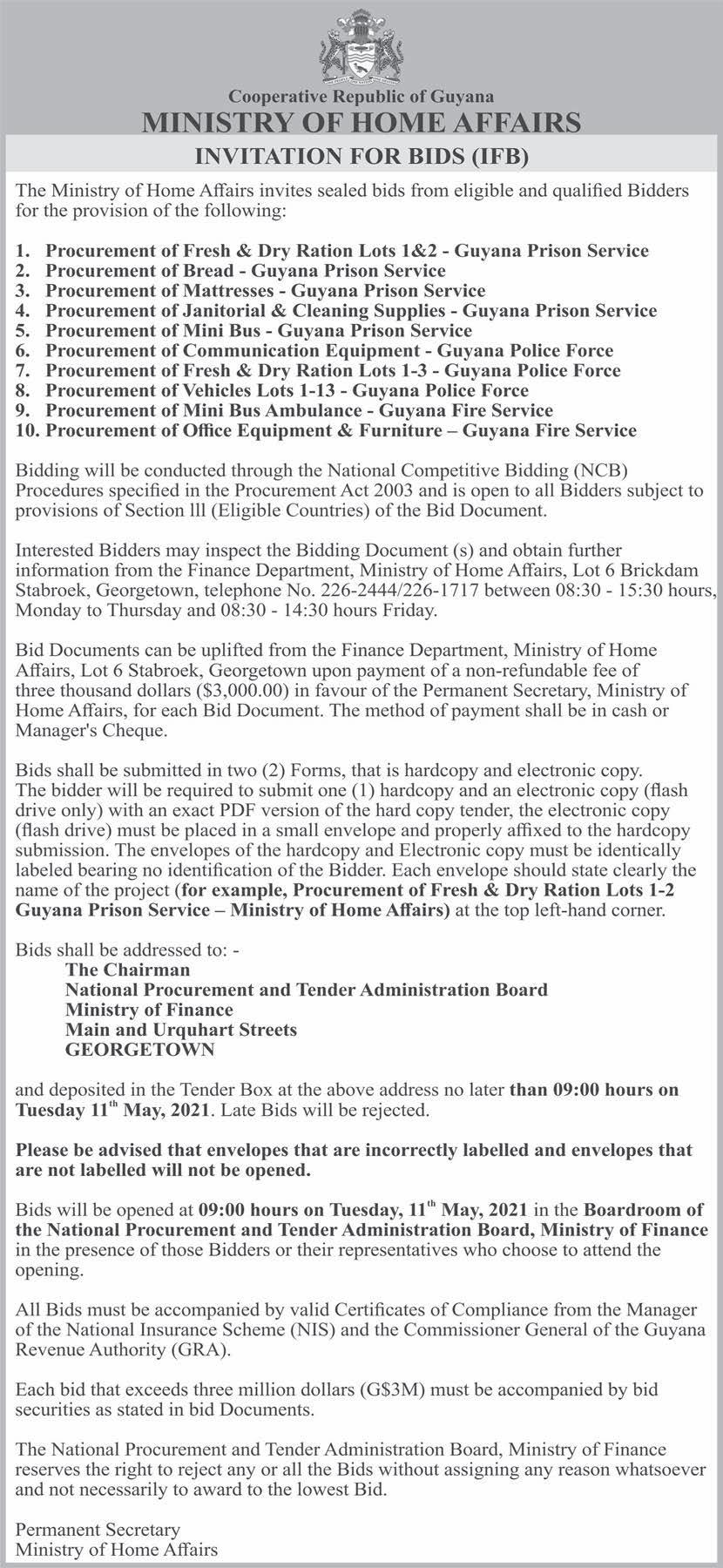NEWS
11
SUNDAY, APRIL 25, 2021 | GUYANATIMESGY.COM
Vaccination Week in the Americas
Children’s vaccination coverage remains high despite COVID-19 impact – Health Minister
E Indian-Guyanese
and Indian media
I
ndians in Guyana, as a subset of indentured Indians who had been shipped to a score of countries starting in 1834, first came to the attention of the Indian public during the tail end of indentureship, at the beginning of the 20th century. Brought to the attention of the leaders of the Indian National Congress (INC) by Gandhi, starting in 1901, resolutions to end the exporting of Indian citizens as if they were no different from commodities like rice and wheat found their way into the burgeoning press. Ironically, what raised the ire of the middle-class members in the INC - many Ravi Dev of whom were members of the Legislature of the Indian Government - was that in South Africa, according to Gandhi, even Indians who had arrived as merchants were derided as “coolies”, and treated accordingly. The calls for abolition resounded first in South Africa, where indentureship was halted in 1911. The Indian Government also sent delegations to the other colonies to investigate the conditions of the Indian emigrants. By 1915, Indian indentureship was dominating the nationalist discourse in the Indian Legislature, public meetings, and their press. In 1913, the story of Kunti and her narrow escape from being raped by an overseer on the plantations of Fiji seized the popular imagination after it was published in an Indian newspaper, Bhatat Mitra, as “The wails of a woman”. The Sanderson Commission Report of 1909, which included descriptions of indentureship in British Guiana, was published to “allay the rising opposition to oversee emigration which is beginning to manifest itself in India…” By March 20, 1917, when indentureship was abolished, the issue had faded from the attention of the Indian Legislators. As such, the Mac Neal and Chimanan Lal Report of 1924, which examined living conditions in the Caribbean and Fiji, barely caused a ripple in the Indian press. In Guyana, however, it caused quite a stir, and precipitated several reforms. One very important newspaper from the Indian Diaspora was interestingly a banned, underground one, “Hindustani Gadar” - Indian Revolution - which was produced in San Francisco and circulated into Guyana by mail. The other media that caused more substantive changes in Guyana and the Diaspora was the Indian Cinema, which produced its first movie in Bombay in 1913, launching the “Bollywood” phenomenon. The first Indian movie shown in the Caribbean was “Bala Joban”, in 1937. While we need to do the research for Guyana, anecdotal evidence indicates it also started our Bollywood wave, since cinemas were built here since the 1920s. This media influenced local and diasporic culture, practices, sensibilities, and even religious practices. With Bollywood movies being driven with playback songs, the latter moulded musical tastes in that community into the present. But we should know that Indian media was totally unidirectional, with not more than a handful of movies shot in the Caribbean (Right and the Wrong – 1969, and Anmol Bandhan – 1974) by Indian filmmakers. In terms of press coverage, the Nehru Congress Government had declared that overseas Indians should focus on developing their new countries, and the overseas Indians faded totally from India’s public consciousness. The introduction of television in Guyana in the eighties opened up new vistas with Bollywood’s entry directly into homes, including by the new millennium Indian soap operas. In the meantime, new emigration - from India to Britain after WWII, and to the US after their change in immigration laws in 1965 - increased exponentially. These highly educated and skilled emigrants, dubbed Non-Resident Indians (NRIs), set apart themselves from the 19th century indentured emigrants - called People of Indian Origin (PIOs). With their quickly accumulated wealth, they received heavy coverage in all Indian media, especially the Bollywood movies, which pandered to their lifestyles. This has reinforced the perception by Indian-Guyanese and other Diasporians that they are not recognised by India on an equal level - just as back in the days of indentureship with the Indian National Congress. However, with the explosion of social media in the last few years, especially during this COVID-19 pandemic, there has been an explosion in communication between India and the Diaspora, especially over platforms like Zoom. This has coincided with a new interest in the 19th century diaspora by the BJP Government starting in 1998, and has fed into Indian Academia. One hopes it is as subjects, and not objects.
ven with disruptions to the health system amid the current pandemic, Guyana has been able to maintain a high level of vaccination coverage within the past year for children across the country. While countries are seeing declining numbers in their immunisation efforts, Health Minister Dr Frank Anthony said on Saturday that this is not the case for Guyana. As a matter of fact, the country has managed between 90 to 100 per cent coverage in the 18 vaccines offered to children. “We have developed, over the years, a very strong vaccination programme for our children and over the last year, despite COVID, we have been able to continue that immunisation programme. We’re giving about 18 different vaccines to our children and when I look at the coverage in most countries, you would have seen the coverage of vaccines decline. In Guyana, fortunately, because
Health Minister Dr Frank Anthony
of the hard work of our staff, we have been able to maintain our vaccination coverage for children between the 90s and in one case, we were able to achieve 100 per cent coverage,” Dr Anthony indicated. While giving props to the robust system in place to safeguard high numbers, the Minister lauded the work of medical practitioners within the public system that contributes greatly.
“I want to compliment the staff for doing that because without them going that extra mile. Without them going out and making sure that every child is getting their vaccine, this would not have been possible.” Saturday marked the start of Vaccination Week in the Americas – a time when attention is placed on the strides made in countries to immunise their people. Last year, the Pan American Health Organisation had said that COVID-19 was disrupting life-saving immunisation services around the world, putting millions of children at risk for diseases like diphtheria, measles and polio. Many countries had temporarily suspended preventive mass vaccination campaigns against diseases like cholera, measles, meningitis, polio, tetanus, typhoid and yellow fever, due to the risk of transmission and the need to maintain physical distancing during the early stages of the
COVID-19 pandemic. “Since March 2020, routine childhood immunisation services have been disrupted on a global scale that may be unprecedented since the inception of expanded programmes on immunisation (EPI) in the 1970s. More than half, 53 per cent of the 129 countries where data were available, reported moderate-to-severe disruptions or a total suspension of vaccination services during MarchApril 2020,” the Organisation had indicated. Transportation delays of vaccines had also exacerbated the situation. UNICEF had reported a substantial delay in planned vaccine deliveries due to the lockdown measures and the ensuing decline in commercial flights and limited availability of charters. Global vaccine alliance, Gavi then signed an agreement with UNICEF to provide advance funding to cover increased freight costs for delivery of vaccines. (G12)







